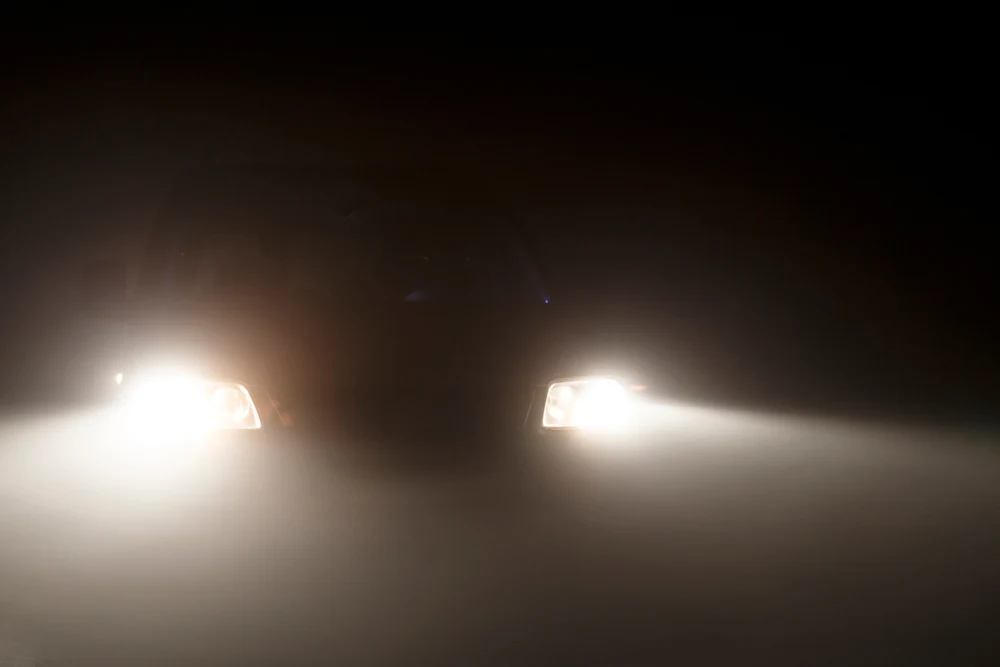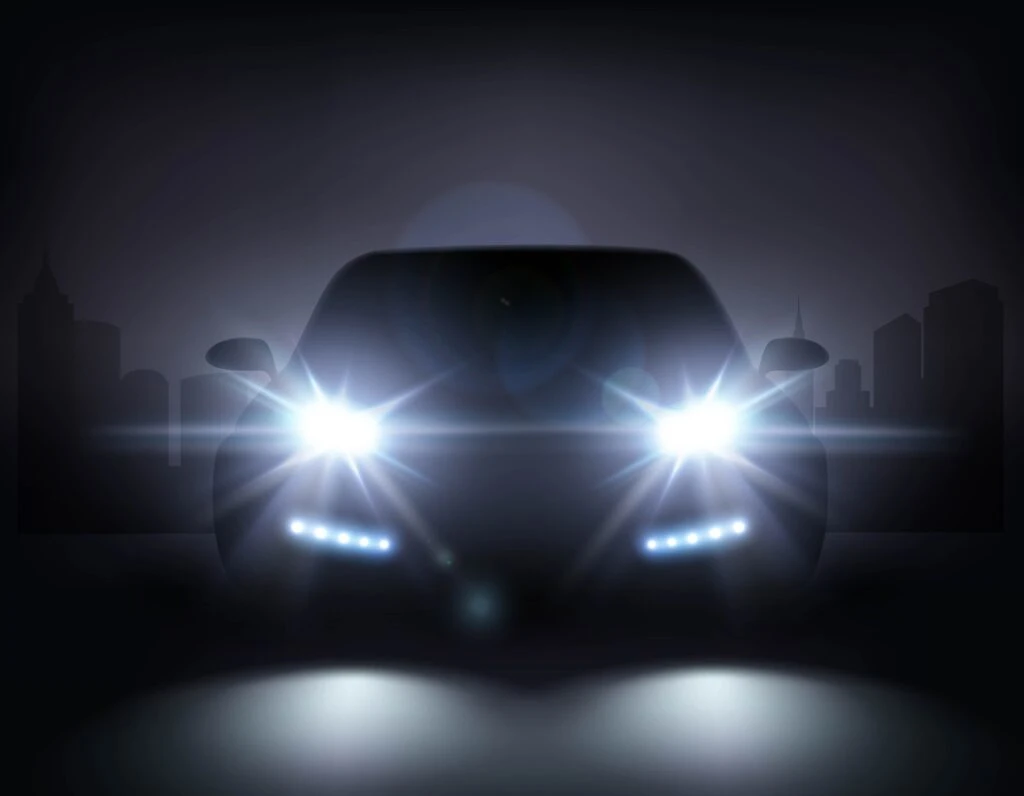LED headlights have become a staple in modern vehicles, celebrated for their energy efficiency and sleek design. Yet, as these lights illuminate the roads, they’ve sparked growing concerns among drivers. Nearly 90% of motorists believe that LED headlights are excessively bright, posing a significant risk to others on the road.
This widespread perception has fueled debates about the balance between technological advancements and road safety. While LEDs offer undeniable benefits, their intense brightness can lead to temporary vision impairment for oncoming drivers, raising questions about whether they enhance or hinder road safety.

The Rise of LED Headlights
LED headlights have quickly become the gold standard in automotive lighting, replacing traditional halogen bulbs in many modern vehicles. Their popularity stems from a combination of energy efficiency, longevity, and a more focused beam that provides better visibility for drivers. Unlike halogen bulbs, which waste significant energy as heat, LEDs convert energy more efficiently into light, making them an environmentally friendly choice. This innovation has not only transformed vehicle aesthetics but also contributed to reduced energy consumption.
However, the advantages of LEDs extend beyond their efficiency. Manufacturers have embraced LED technology for its ability to produce a brighter and more natural light, mimicking daylight. This makes it easier for drivers to spot obstacles, read road signs, and navigate poorly lit areas. Moreover, the compact size of LED bulbs allows for more versatile designs, enabling carmakers to experiment with sleek and futuristic headlight shapes that enhance vehicle appeal.
Despite these benefits, the transition to LED headlights has not been without controversy. While they undoubtedly improve visibility for the driver using them, the intensity of their beams has raised concerns among other road users. The sharper and more focused light, often aimed at a higher angle, can create significant glare for oncoming drivers. This has led many to question whether the benefits of LED headlights outweigh the potential risks they pose to overall road safety.
Why Do Drivers Find LED Headlights Too Bright?
The perception of LED headlights being too bright is not entirely unfounded. LED lights typically emit higher lumens, which measure the intensity of visible light, compared to traditional halogen bulbs. While this increased brightness is designed to enhance visibility for the driver, it can unintentionally lead to glare, particularly for oncoming traffic. This effect is exacerbated by the focused beam pattern of LEDs, which concentrates light in a specific area rather than diffusing it like older technologies.
Another factor contributing to the discomfort is the color temperature of LED lights. LEDs often produce a cooler, bluish light, which is closer to the spectrum of daylight. While this may be beneficial for the driver’s visibility, it can be harsh and overwhelming for others. Studies have shown that blue-rich light sources can scatter more in the eye, increasing the likelihood of discomfort and temporary blindness for those facing these beams head-on. This scattering effect is particularly pronounced during night driving when the eyes are more sensitive to intense light.
Moreover, the issue is not just about brightness but also about poor alignment and regulation. In some vehicles, improperly aligned LED headlights can further intensify glare, making it harder for oncoming drivers to maintain their line of sight. As more vehicles adopt these lights without standardized adjustments, the problem has grown, leaving many drivers feeling frustrated and vulnerable on the roads.

Safety Implications of Overly Bright Headlights
The safety risks associated with overly bright headlights are significant and well-documented. One of the primary dangers is temporary blindness, a condition known as “disability glare,” which occurs when a driver is exposed to intense light that overwhelms the eye’s ability to adapt. Even a brief moment of impaired vision can lead to delayed reaction times, making it more challenging to respond to unexpected situations like a pedestrian crossing or an animal darting onto the road.
This issue becomes even more critical on two-lane roads where oncoming traffic is closer, and there is less time to adjust to the glare. Bright LED headlights can disorient drivers, increasing the likelihood of head-on collisions. Studies have highlighted instances where overly bright headlights contributed to accidents or near-misses, particularly in rural or poorly lit areas where drivers are already at a visual disadvantage. The effects are also compounded in adverse weather conditions, as rain or fog can amplify the glare by reflecting the light back into the driver’s eyes.
Pedestrians and cyclists are not immune to these risks either. Bright headlights can obscure the visibility of non-motorized road users, making them harder to spot. This raises concerns about the broader implications of LED lighting, not just for drivers but for everyone sharing the road. While LED technology has revolutionized automotive lighting, its unintended consequences on safety highlight the urgent need for better regulation and thoughtful implementation.
Regulatory Standards and Industry Response
Regulations surrounding headlight brightness vary widely, leaving a gap in consistent enforcement that has exacerbated the problem. In some regions, maximum allowable brightness levels are set in terms of lumens or lux, but these standards often lack uniformity across countries or even states. This inconsistency creates challenges for automakers trying to comply with a patchwork of rules while still delivering the brightness levels demanded by consumers.
To address these concerns, some manufacturers have begun introducing adaptive lighting systems. These systems use sensors to detect oncoming vehicles and automatically adjust the beam angle or intensity to reduce glare. While this technology shows promise, it remains a premium feature in many cases, limiting its accessibility to luxury vehicles. There is also the question of whether such systems can effectively address the core issues of misaligned headlights and excessive brightness in all driving conditions.
Advocacy for stricter regulation has grown alongside these industry efforts. Safety experts argue for more stringent testing and certification processes to ensure that LED headlights meet not only brightness standards but also alignment and beam pattern requirements. Governments and industry leaders must collaborate to create clearer guidelines that prioritize safety without stifling innovation. This balance is essential to addressing the growing frustrations of drivers while preserving the benefits of LED technology.
Expert Insights and Solutions
Experts in both automotive safety and optometry have weighed in on the challenges posed by overly bright LED headlights. Optometrists often highlight the strain that intense light can place on the human eye, particularly during night driving when pupils are naturally dilated to take in more light. Sudden exposure to a bright, concentrated beam can cause discomfort and temporary visual impairment, known as glare recovery time. This effect is especially concerning for older drivers, whose eyes take longer to adjust to changes in brightness.
Automotive safety specialists emphasize the role of proper headlight design and alignment in mitigating these risks. Even the most advanced lighting technologies, when improperly installed or misaligned, can become hazards rather than aids. For instance, a poorly aimed LED headlight might project light directly into the line of sight of oncoming drivers, amplifying glare and reducing road safety. These experts advocate for mandatory headlight alignment checks during vehicle inspections to ensure compliance with safety standards.
Potential solutions extend beyond regulatory measures and technical fixes. Some experts recommend that drivers invest in anti-glare accessories, such as polarized or anti-reflective glasses, to reduce the impact of intense headlights on their vision. Public awareness campaigns can also play a vital role in educating drivers about the importance of proper headlight use, including dimming high beams when approaching other vehicles. Combined efforts from policymakers, manufacturers, and the driving community are essential to addressing this multifaceted issue.
What Can Drivers Do?
Drivers facing challenges with overly bright headlights can take several practical steps to protect themselves and improve road safety. One of the simplest yet most effective measures is to ensure their vehicle’s mirrors are correctly adjusted. Tilting the rearview mirror downward can prevent the glare from headlights behind from reflecting directly into the driver’s eyes, while side mirrors should be angled to minimize glare from passing cars.
Another effective strategy is the use of anti-glare lenses, available as prescription or non-prescription options. These lenses are designed to reduce the harshness of bright lights, providing clearer and more comfortable vision during night driving. They are particularly helpful for individuals who frequently drive on highways or in rural areas where bright LED headlights are more common. Additionally, drivers can opt for windshield treatments that reduce light scatter and improve clarity.
It’s equally important to adopt defensive driving habits. Maintaining a safe distance from vehicles with excessively bright headlights can reduce their impact. When approaching oncoming traffic, focusing on the road’s right edge rather than directly at the headlights can also minimize the glare’s blinding effect. These small but significant adjustments can help drivers navigate the challenges posed by bright LED headlights while staying safe on the road.
Balancing Brightness and Safety on the Road
The rise of LED headlights marks a significant advancement in automotive technology, offering improved visibility and energy efficiency. However, their intense brightness has sparked widespread concerns about road safety, with nearly 90% of drivers believing they are too bright and potentially hazardous. From temporary blindness to increased accident risks, the challenges posed by these lights highlight the need for balanced solutions that consider both innovation and safety.
Addressing this issue requires a multifaceted approach. Manufacturers must continue to innovate with features like adaptive lighting while ensuring proper alignment and compliance with regulatory standards. Policymakers should work toward more consistent and enforceable guidelines, and drivers can adopt practical strategies to mitigate the effects of overly bright lights. By prioritizing collaboration and awareness, it’s possible to create safer roads for everyone while maintaining the benefits of cutting-edge technology.
Sources:
- Zhao, Z., Zhou, Y., Tan, G., & Li, J. (2018). Research progress about the effect and prevention of blue light on eyes. International Journal of Ophthalmology. https://doi.org/10.18240/ijo.2018.12.20
- Pines Salomon Personal Injury Lawyers. (2024, October 17). Accidents due to headlight glare: Shining light on the issue | Pines Salomon Personal injury Lawyers. https://seriousaccidents.com/personal-injury-resources/accidents-due-to-headlight-glare/



